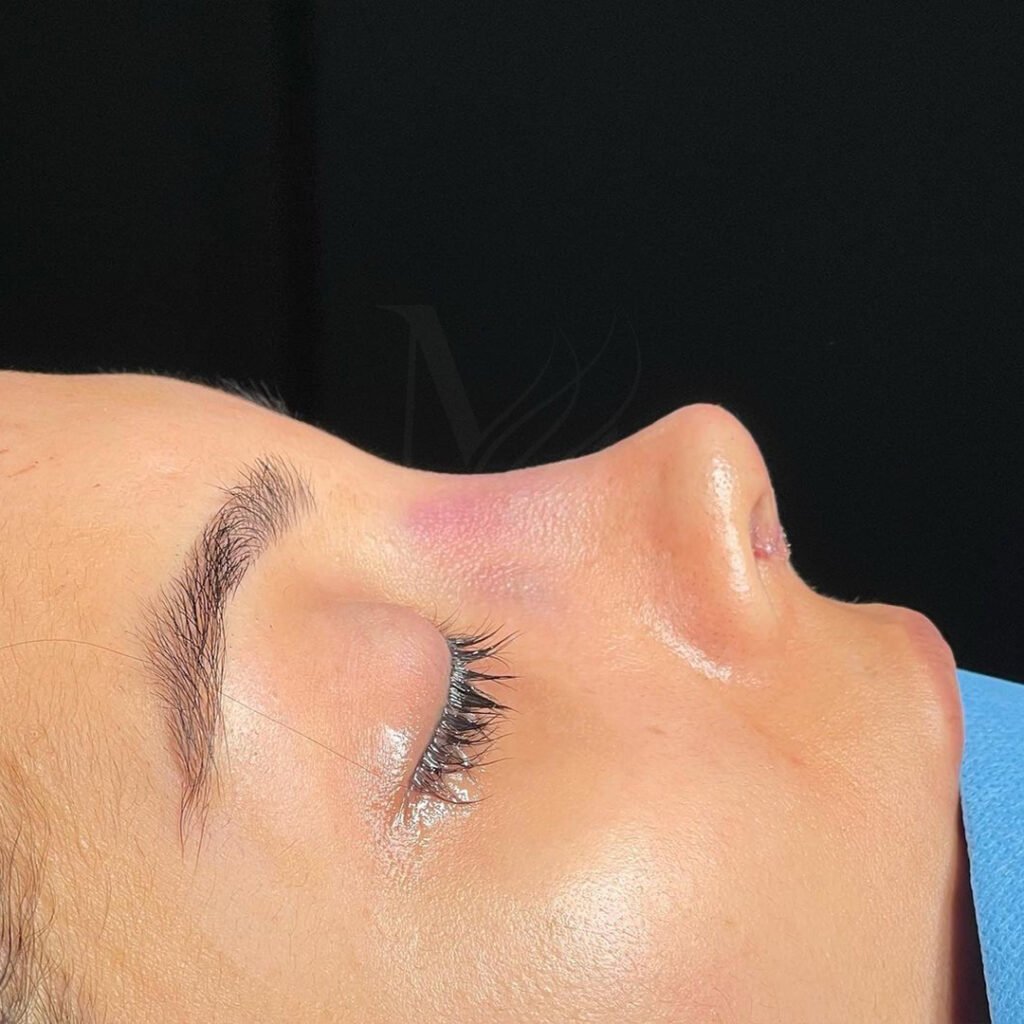Rhinoplasty
Rhinoplasty, also known as a nose job, is a cosmetic surgery that has become popular worldwide in the last few decades. The surgery intends to reshape the size of the nose and give it a more aesthetic shape that goes with the overall face structure of the patient. Apart from its aesthetic concerns, a nose job can also treat any medical conditions such as breathing problems, sinus problems, or any defects the nose suffers from. With one surgery, you can change the shape of your nose, get the desired look, and treat your medical issues.
Techniques Used In Rhinoplasty
Over the years, with improvements in the plastic surgery field, techniques for nose jobs in Turkey have also been developed. Three main techniques are used in Rhinoplasty operations: Closed, Open, and lastly Ethnic Rhinoplasty. Plastic surgeons have to use general anesthesia in all of these surgical procedures.
- Closed Rhinoplasty: In this technique, the doctor makes an internal incision between the upper and lower cartilage to hide the cracks inside the nose. This technique takes less time and has a faster recovery period.
- Open Rhinoplasty: In this technique, the doctor makes an external incision through a tube. This technique is used in cases of aberrations and apparent deformities. Furthermore, an open rhinoplasty gives the surgeon more space to move freely. Therefore, it is more possible to make precise changes to the nose shape.
- Ethnic Rhinoplasty: Ethnic Rhinoplasty is a variation of traditional rhinoplasty. This technique is performed on patients who are Middle Eastern, Asian, African, and coming from an ethnic or non-Caucasian background. Most of the time, this technique aims to reshape the nose and especially make the nostrils smaller.
Candidates For Rhinoplasty
People with medical problems with their nose
- People who have malformations in the nose from birth.
- People who have suffered from painful accidents that affected their nose bones or shape.
- People who are exposed to diseases that may lead to erosion or deformity of the nose, such as smallpox and leprosy.
- Patients with certain cancers can affect the nasal base.
- The patient must be older than 18 to be a candidate for nose surgery, and their facial features and bones must be developed and complete.
Pre- Rhinoplasty Tips
As with all the surgical operations, rhinoplasty operation requires a preparation period.
- Before having the operation, you should take a week off from school or other commitments.
- Consult your doctor and do the tests he requests from you.
- Stop smoking for 2 weeks – 1 month before doing a Rhinoplasty.
- Do not drink any alcohol before the operation.
- Refrain from taking any blood-thinning medications.
- Take Vitamin C for a period before the operation.
Rhinoplasty Stages
Medical Examination —The rhinoplasty surgeon requires the patient to get the necessary tests before starting the surgery.
- Anesthesia — As with all plastic surgeries, also in rhinoplasty surgery, the patient gets general anesthesia. Then,, the doctors make the incisions using the appropriate technique based on the patient.
- Nose reshaping — This stage is the main stage of the Rhinoplasty procedure. The surgeon reshapes the bones and cartilage of the nose as agreed upon with the patient before the operation. Most of the time, rhinoplasty includes reshaping the nose and lifting the tip of the nose.
- Correction of the nose shape — In this stage, the doctor closes the incisions made and installs the nasal splint. Then, all the patient has to do is wait for the results. The final results appear after a year. However, after a couple of weeks, when the swelling fades away, you can start seeing the changes.
Post-Operation Tips
Like all plastic surgeries, a rhinoplasty, nose job, and surgery also require some time to recover. Every day throughout the first week, you will feel progressively better. After the surgery, there might be swellings on your face, which is typical and expected. One week after the rhinoplasty operation, you will start feeling better. At this stage, the patient should follow the instructions given by the doctor to get the desired results with no complications. Some of these tips are:
- Take the medicines and antibiotics your doctor prescribes regularly to avoid any infection.
- Use cold water to compress your eyes and nose to reduce the swelling.
- Avoid violent activities until the wound is fully healed.
- Eat plenty of fiber-rich foods such as vegetables and fruits.
- Keep your head up for a few weeks after the operation.

Operation Overview !
Hospitalization Duration
1 Night
Stay in Istanbul
7 Days
Return to Activities
7 Days
Anticipated Results
6-12 Months
Before Rhinoplasty Surgery
Embarking on the transformative journey of rhinoplasty involves careful preparation and consideration. Start with a comprehensive consultation with our experienced surgeons, discussing your goals and expectations. Manage expectations, understanding that immediate results may not be evident, and patience is crucial during recovery. Prioritize your health with a thorough assessment, sharing your medical history for a tailored procedure. Consider lifestyle adjustments, such as quitting smoking, and discuss medications with our surgical team. Adhere to preoperative guidelines, including fasting, for enhanced safety and success. Taking these steps ensures a positive and satisfying rhinoplasty experience. Our health tourism destination specializes in guiding individuals through every stage of their nasal enhancement journey. Contact us to initiate the transformative process in a supportive and expert led environment.
After Rhinoplasty Surgery
Navigating the post rhinoplasty phase is pivotal for a successful aesthetic journey. After surgery, adhering to comprehensive aftercare is essential. Follow provided instructions for wound care, discomfort management and prescribed medications. Expect normal swelling and bruising, alleviated by cold compresses over the initial weeks. Prioritize rest, avoiding strenuous activities, and maintain an elevated head position to minimize swelling. Attend scheduled follow up appointments for progress monitoring and prompt issue resolution. Cultivate patience during the healing process, acknowledging that results take time. Prioritize positive emotional well being for overall recovery success. Our health tourism destination is dedicated to supporting you through every rhinoplasty stage. For expert guidance in navigating the transformative process of rhinoplasty recovery, feel free to contact us.
Amazing Result! rhinoplasty After





